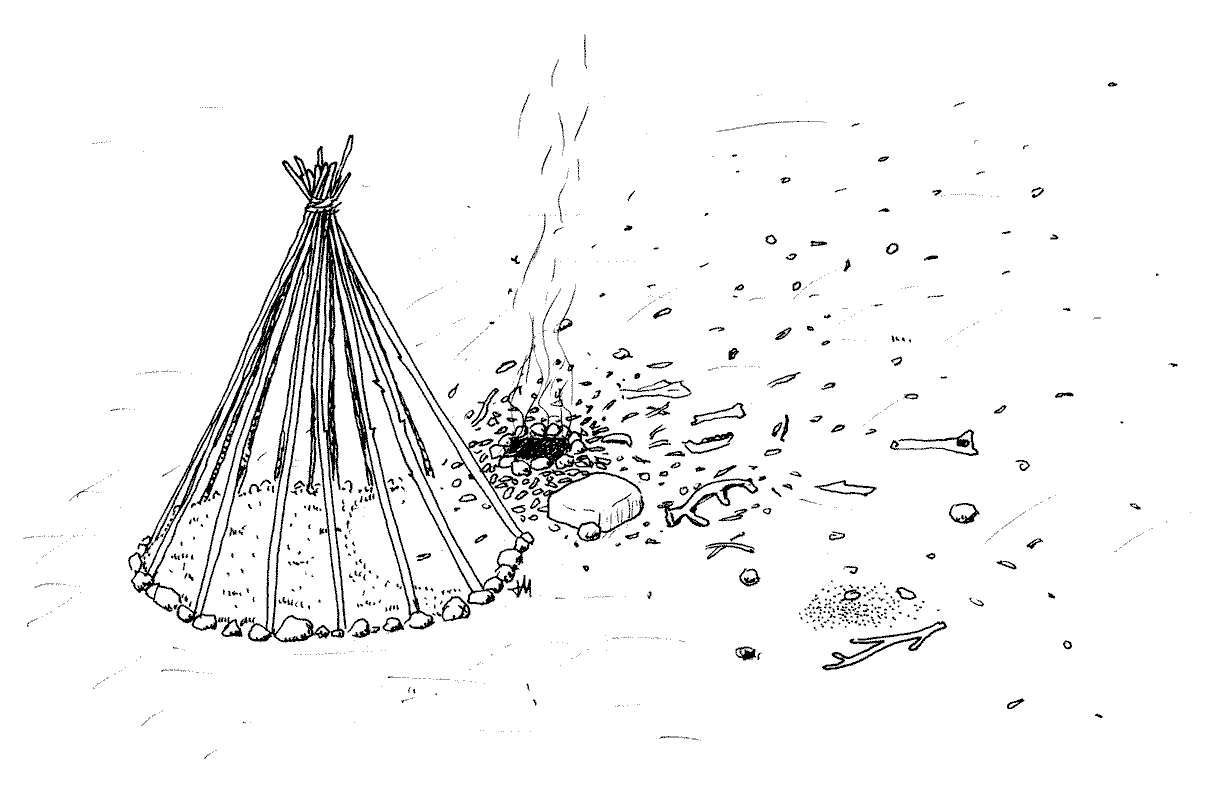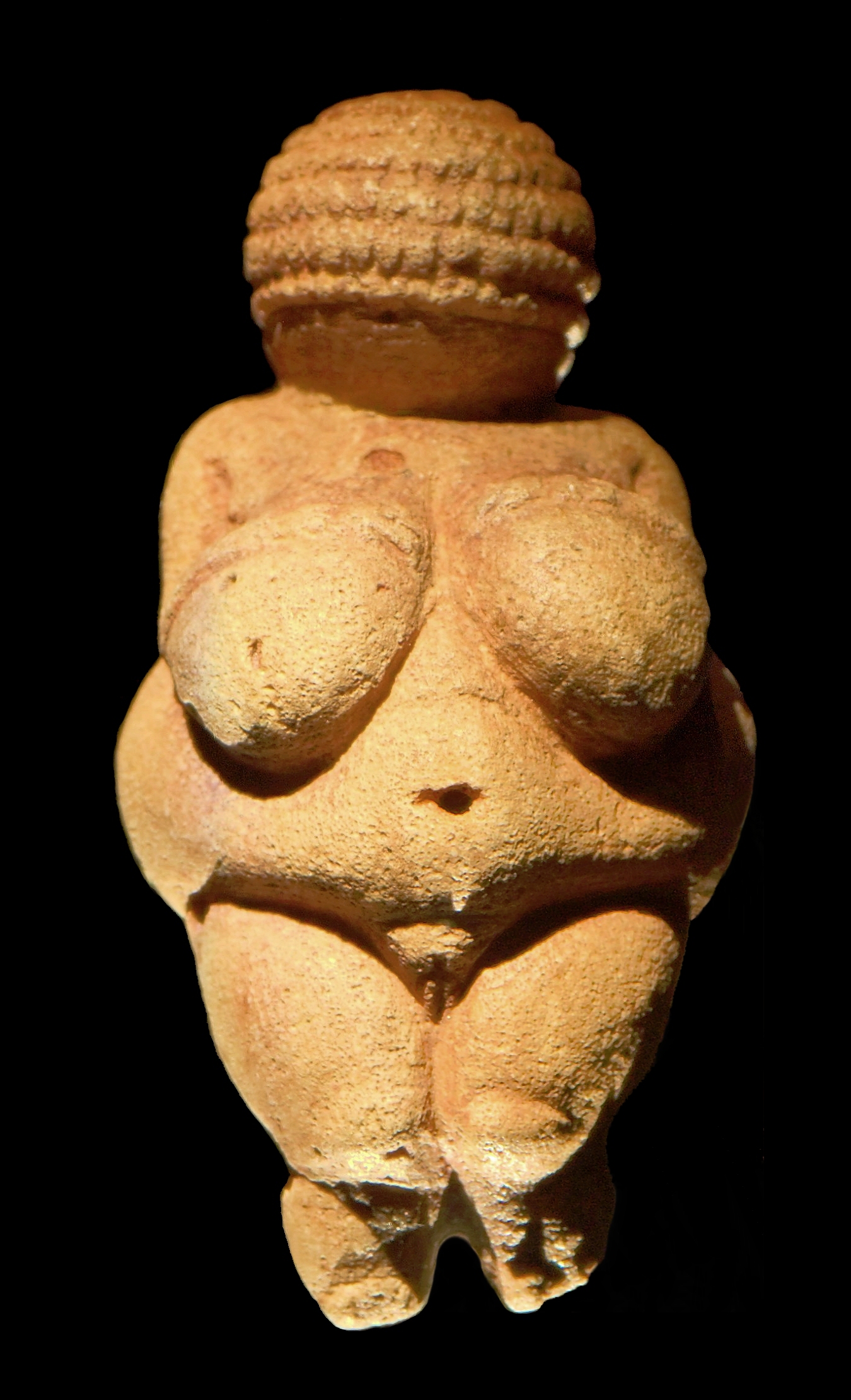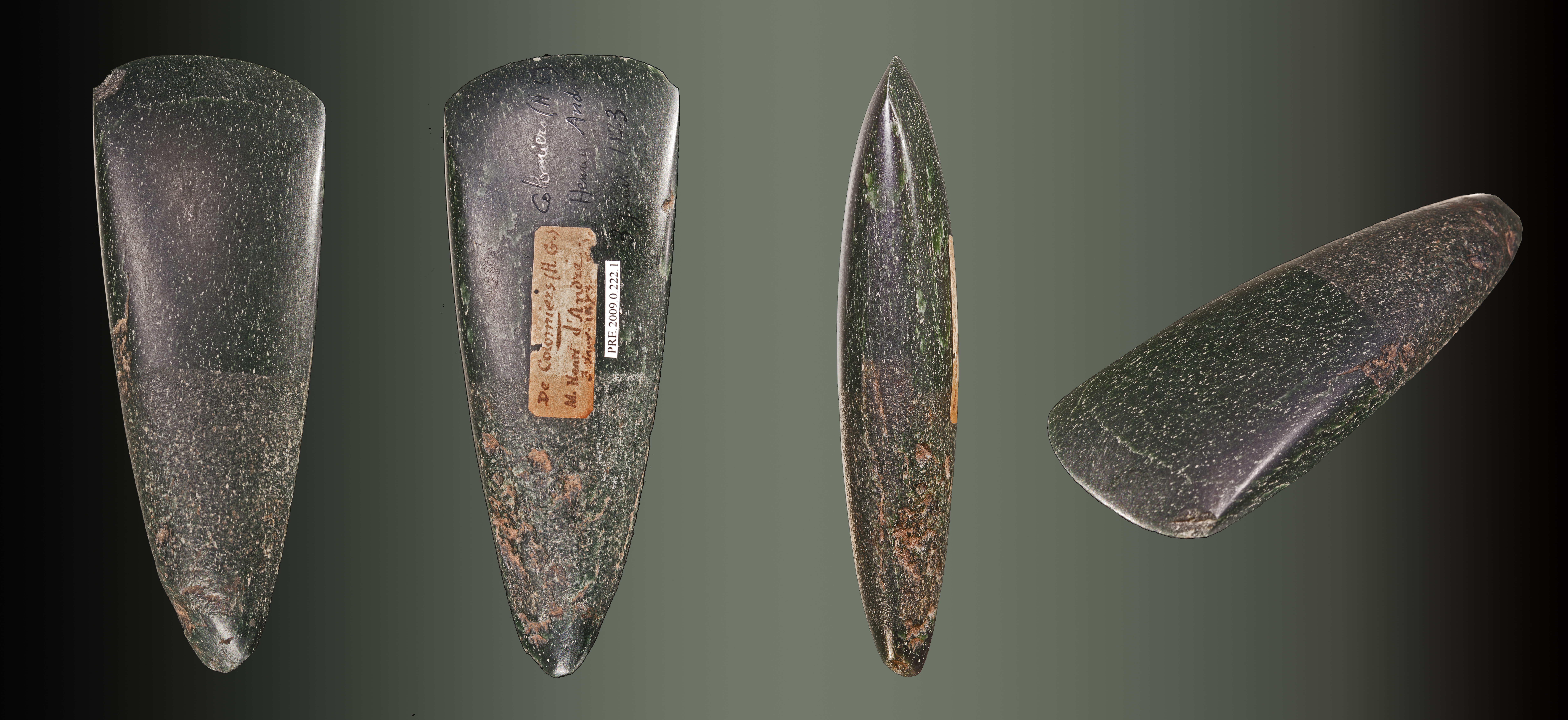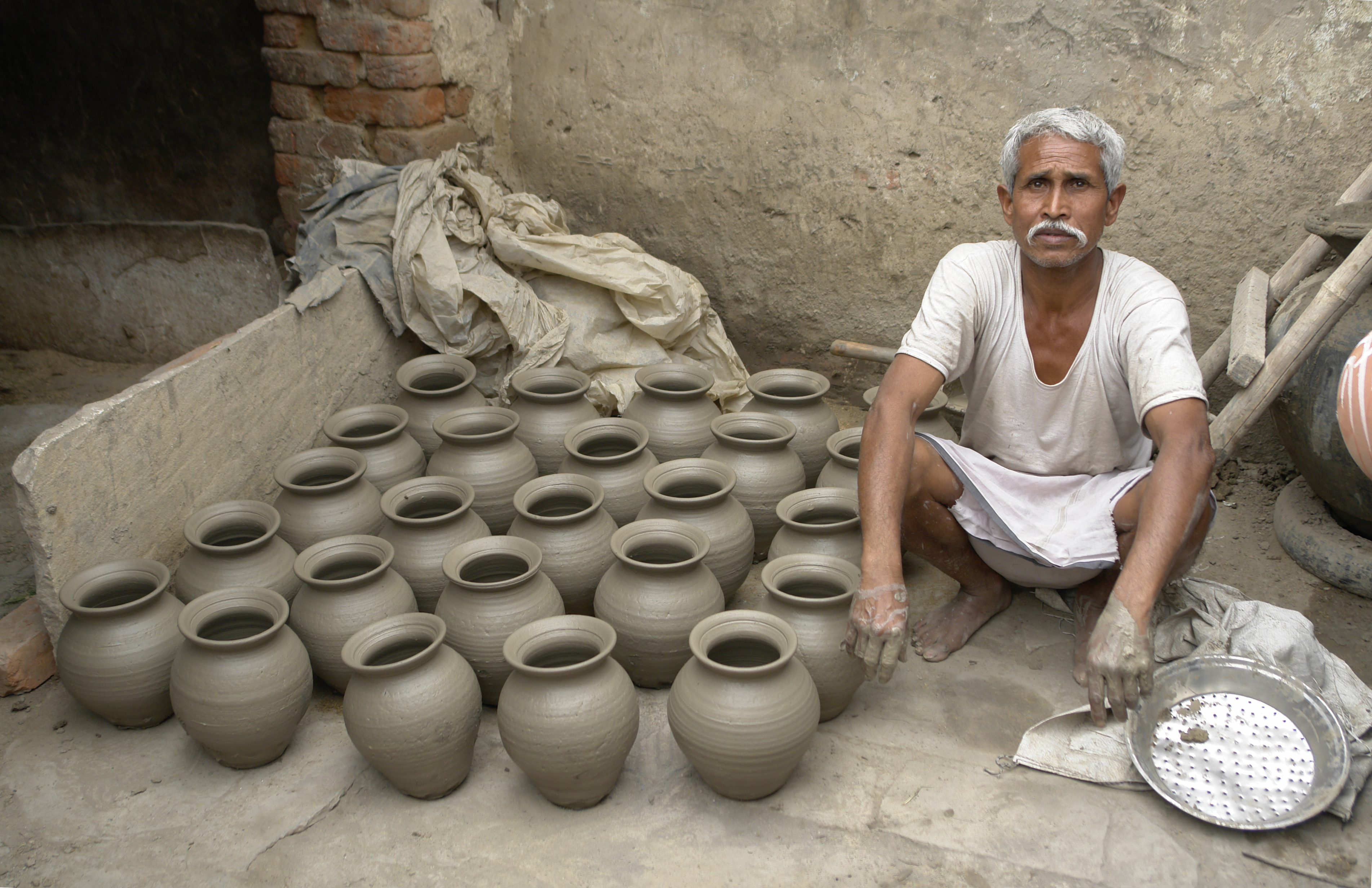1. AGES AND SOURCES OF PREHISTORY.
Time and the science of history.
History: the science that studies humanity's past.
History studies all the aspects of human life:
- politics.
- economy
- society.
- culture.
- art.
Division of history.
To facilitate its study,
we divided History into periods of variable lengths, separated by key events. The most importan are:
- eras. There are two of them:
- Prehistory, the period of time from the apparition of the first human being to the invention of writing.
- History, from the invention of writing to present day.
- We divide eras into shorter periods of time, known as ages.
-
Prehistory is divided into two ages:
- Stone Age, from the apparition of the first hominids (4,4 million years ago) to the invention of metal tools (4.500 B. C.).
- Metal Age, from the invention of metal tools (4.500 B. C.) to the invention of writing (3.250 B. C.).
-
History is divided into four ages:
- Ancient, from the invention of writing (3. 250 B. C.) to the fall of the Roman Empire (476 A. D.).
- Middle, from the fall of the Roman Empire to the discovery of America (476 A. D.-1492 A. D.)
- Modern, from the discovery of America to the French Revolution (1492 A. D.-1789 A. D.)
- Contemporary, from the French Revolution to the present day (1789 A. D.-?).
The division of prehistory.
Prehistory is
the period of time from the apparition of the first human beings (4,4
million years) to the invention of writing (3.250 B.C). We can divide it into two ages:
- Stone Age, tools were made of stone. We can distinguish:
- Paleolithic (literally, Old Stone) from 4,4 million years ago to 10.000 B. C. Tools were carved from stone.
- Neolithic (literally, New Stone) from 10.000 B. C. to 4.500 B. C. Tools were made of polished stone.
- Metal Age,
tools were made of metal, from 4. 500 B. C. to between 3. 250 B. C. (in
the Fertile Crescent) and 1. 000 B. C. (in other parts of the World).
We can distinguish three periods according to the metal used:
- Cooper Age (3. 250 B. C.-2. 200 B. C.)
- Bronze Age. (2. 200 B. C.-1. 500 B. C.)
- Iron Age. (1. 500 B. C.-1. 000 B. C.)
The sources for prehistory.
In order to the study prehistory our sources are:
- the remains left behind by primitive human beings: humans (bones) and material (tools, pottery).
- the remains of animal or plants of their time.
Most of this remains are buried, because of that is necessary to carry out archeological excavations.
An archaelogical excavation is a slow and expensive digging to recover remains buried underground.
It is composed of several stages:
- Division of the site into a grid.
- Excavation of the site.
- Creation of a file for each object: number, description, site coordinates.
- Dating of the remains: the lower strata are older than the upper ones.
2. ORIGIN AND EVOLUTION OF HUMAN BEINGS.
The problem of our origin.
- Until modern times was though that human beings has appeared over this planet in the current form.
- In the XIX century, the theory of the evolution was developed by
Charles Darwin. According to it, human beigns evolved from primates, a
type of mammals which appeared 65 million years ago.
- Five million years ago, primates started to evolve into two different direcctions:
- On the one hand appeared the pongids: chimpanzee, orangutan, gorilla.
- On the the other, appeared the hominids, our direct ancestors.
Hominisation process.
There were three biological changes that made hominids different from the rest of the large simians:
- A biped mode of walking. The position of their hip and the
extension of their pelvis allow them to took firm steps and large
strides. As a consequence, their hands were freed from the act of
walking to use for other purposes.
- Developed and opossable thumbs (far more efficient that the
one belonging to pongids). That made possible to easily manipulate
objects and therefore, developing tools.
- As a consequence, the brain and skull size increased, increasing their intelligence. This made possible:
- though
- speech
- formation of complex societies.
 |
| Increase of the brain size. |
 |
| Opposable thumb.
Comparision of a human and a chimpanzee hand. Our thumbs are far more
developed than the thumbs of the apes and this allow us to build complex
tools. |
Human evolution and its stages.
Definition: hominisation was the long evolutive process trough which the hominids adquired their own unique features.
Chronology: this process took place in Africa between seven and 4 million yeas ago.
Causes: a climatic change
that made the african climate a lot drier. As a consquence big
extensions of tropical rainforest were transformed into treeless
savannah, and the primates of this zones were forced to leave the trees and descend to the ground in order to look for new food sources.
We can distinguish several stages in this process:
- First, in Africa, the oldest hominids, which were very similar to the other primates, appeared:
- Ardiphitecus,
about 4,4 million years ago. It was perhaps the first hominid that can
walk upright, fed on fruits and could climb trees. He lived in Africa.
- Australophitecus, about 4, 2 million years ago. The first hominid that used tools but did not make them. He lived in Africa
- Later, appeared the Homo genus: hominid classified as humans due to their appearance and toolmaking skills. We can distinguish:
- Homo Habilis, appeared 2, 4 million years ago. Considered the first human beign. First hominid who can make tools. He lived in Africa.
- Homo Erectus,
appeared 1, 8 million yeas ago. First hominid to leave Africa, he lived
in Africa, Asia and Europe (the oldest european remains appeared
800.000 years ago). First hominid to use fire.
- Homo Neanderthalensis.
Lived between 200.000 and 35.000 years ago. He lived in Europe and the
Middle East during the glacial period. He took refugee in caves and was
the first hominid to bury their deads.
- Homo Sapiens,
appeared in Africa 195.000 years ago. They made tools from stone an
bone and created the firsts art forms. They also extended across almost
all the continents.
 |
| Australopithecus Afarensis, the first hominid. |
 |
| Homo habilis, the first human and the first hominid able that made tools. |
 |
| Chopper, a tool made by the Homo Habilis. |
 |
| Homo Erectus, the first homnid that was able to use fire. |
 |
| Handaxe, a tool made by an Homo Erectus. |
 |
| Homo
Neanderthalensis. File:MEH_Homo_neanderthalensis_29-04-2012_11-39-17_2592x3888.JPG https://commons.wikimedia.org/wiki/User:Nachosan |
.jpg) |
| Facial
reconstruction of an early Homo Sapiens (our own species) found in
Romania. File:Neanderthaler,_Oase,_Rumänien_(Daniela_Hitzemann).jpg Daniela Hitzemann - Pressebilder Neanderthal Museum, Mettmann CC BY-SA 4.0 |
.jpg) |
| Homo Sapiens from different parts of Earth. File:Human_races_according_to_Coon_(collage).jpg License: CC BY-SA 3.0 |
 |
| Magdalenian
bone needles. Homo Sapines were able to make very specialized and
complex tools using bone or antler. File:Aiguille_os_246.1_Global.jpg
Author. https://commons.wikimedia.org/wiki/User:Archaeodontosaurus
License: CC BY-SA 4.0 |
3. LIFE DURING THE PALEOLITHIC PERIOD.
Palaeolithic is the first period of the Prehistory that started 4. 4. million years ago and ended 10.000 years B. C.
Economy.
Paleolitic people lived in a wide variety of enviorments
(torrid climates, frigid), life was very difficult and human beings had
to use most of their time to find food or reefuge. The main
characteristics of their way of life were:
- Predatory economy (they took resources from Nature without replacing them). They obtained resources through:
- hunting (deers, reindeers, bisons, horses and mammoths).
- fishing
- food gathering (roots and fruits).
Apart from food, from their preys they obtained clothes
(fat, tendons and hides) footwear (leather) and bones (tolos). We talk
about a predatory economy, because
- Nomadic life. Primitive human beings did not live in one place, instead they had to move constantly to follow their preys:
- During the summers they lived in huts made of branches and hides, located close to rivers.
- During the winters they sought shelters in natural caves.
Technological contributions and inventions:
The main technological advances of the Paleolithic were:
- Stone tools, using the stonecarving technique:
- You
strike one stone against another to make axes or bifaces, arrow heads and
knives
- The
pieces that came away were used as knives, scrapers…
- They
also used bones and antlers to produce harpoons, fish hooks and needles.
Fire, was important because:
- it provided light and heat inside the caves.
- it frightened savage animals.
- It could be used to cook food and dry animal hides.
- It favoured social relations: around a fire, people shaerd their daily activities and asigned duties to one another.
Tribal society.
Humans
lived in groups of about 20 or 30 people who were linked by family ties
(tribes). It is thought that some members of the group had a greater
importance:
the shaman or healer.
the strongest hunter.
Beliefs.
Today is believed that there were three forms of religious beliefs:
-
Belief in the power of natural elements: the Sun, the Moon, the stars, etc.
- Magic rituals to influence natural forces.
- Veneration of the dead that were buried along with food and weapons. This indicate a belief in a life after death.
 |
| Paleolithic tent. During the Paelolithic period Humans were nomad and lived in caves or huts made of branches. |
Paleolithic art.
There were two main forms of art during the Paleolithic period:
- Portable art, with the following characteristics:
-
Were moveable objects.
- Made on stone, bone and ivory decorated with reliefs.
- The
main examples were: engraved sticks, weapons and pendants; Venus small
statues of women which acentuated feminine attributes.
- Cave painting,
appeared 40.000 years ago. These painting has appeared all across
Europe, from Gibraltar to Siberia, but about an 80% has been discovered
in France and the Iberian Peninsula.
Their main characteristics were:
- located on the walls and ceillings of caves.
- Represented animals (bisons, horses, mammoths, deers) with a high degree of realism, schematically drawn human beings and symbols such as hands or vulvas.
- Were
polychrome.
They made pygments mixing animal fat with natural substances
such as iron oxide (red), charcoal (black) and earth (ochre). They
applied colours using their fingers or blowing the pigment through bird
bones.
 |
| Charcoal. |
 |
| Iron oxide. |
 |
| Cave Painting, Lascaux. |
 |
| Woolly rhinos, Chauvet cave. |
 |
| Venus of Willendorf. |
4. THE NEOLITHIC.
Chronology.
The Neolithic period started around 10.000 B. C. and ended about 4.500 B. C. with the apparition of metalworking.
Where and why.
10.000 B.C. ago, the last glaciar period ended with a climatic change
and a rise in the atmospheric temperatures. As a consequence, there was
less food and paleolithic groups had to find new ways to find food,
developing agriculture and livestock farming.
These changes that started the Neolithic period took place in the Fertile Crescent, a half-moon shaped region extending from the rivers Tigris and Euphrates to the Nile. From there spread to Europe, India and China
Economy.
The main two characteristics of the Neolithic were the
apparition of the productive economy and the sedentary way of life.
These changes are so important that we call it, the Neolithic
Revolution:
- Productive economy, was based in agriculture and livestock farming:
- Agriculture appeared
when people discovered that seeds which fell to the ground grew into
new plants. The first domesticated plants were cereals such as wheat and rice.
- Livestock farming,
appeared when they started to confining animals (sheep, goats, pigs
and oxen) in pens to use then as a meat source, instead of hunting.
- Sedentary way of life. In order to take care of their fields of crops and herds, farmers adopted a sedentary way of life with two main consequences:
- Apparition of hamlets,
located on the banks of the rivers. First they were made of bamboo
cabins reinforced with clay and later stone and adobe house.
- Apparition of different trades, along with farmers and herdsmen, craftsmen that made tools that exchanged for food, for example potters and weavers.
New inventions.
The main inventions of the Neolithic period were:
- Development of the grinding or polishing tecnique to make stone tools. This technique has several advantages:
- Eliminated rough edges.
- Made stone more resistant.
- Allow to make new tools, necessary to carry out agricultural tasks such as hoes, sickles, pestles and mortars.
- Pottery was made by hand from clay then baked in a fire. It was used to store and cook food.
- Woven textiles were made from linen and wool and were woven in looms.
Society.
The productive economy the following social changes:
- Enormous increase in the population.
- Apparition of rulers who coordinated defence, water use and collective works. Over time, they became political authorities.
- Apparition of social inequalities with different social groups distinguished by their wealth and labour.
Religious beliefs.
The main religious rites were dedicated to:
- astrological entities, which guided the sowing and harvesting.
- the mother goddess, who ensured the fertility.
- the dead.
The most important art form was decorated pottery.
 |
| Polished stone tools. |
 |
| Polished stone axes. File:Hache_222.1_Global_fond.jpg Author: https://commons.wikimedia.org/wiki/User:Archaeodontosaurus License: CC BY-SA 4.0 |
 |
Reconstruction of a Neolithic house. File:Archodrom Beaune 10.jpg https://fr.wikipedia.org/wiki/Utilisateur:Christophe.Finot
Attribution ShareAlike 2.5 |
 |
| Neolithic pottery. |
 |
| Potter. License: GFLD |
 |
| Reconstruction
of a neolithic loom. File:VerticalLoom.JPG Author:
https://commons.wikimedia.org/wiki/User:CristianChirita License: CC
BY-SA 3.0 |
5. COPPER, BRONZE AND IRON AGES.
Chronology.
The Metal Age started around 4. 500 BC with the
discovery of metallurgy and ended between 3.250 BC and 1.000 BC,
according to the date of the invetion of writing which supposed the
start of history.
Economy.
Metalworking.
- The first metal use in metalworking was copper, starting around 4.
500 B. C. in the cities of the Fertile Crescent. Due to its limited
durability was mostly used for adornments.
- Around 2.200 BC, they started to use bronze, an alloy of copper and
tin, harder and which can be used to make a greater variety of tools.
- Around 1.500 BC, iron production was dicover around the Black Sea
área, but its expansión was slow due to the advantage which gave to the
peoples that used it.
Other economic activities.
- As during the Neolithic, agriculture and livestock farming provided the basis for the economy.
- Artisan production was very important also: wool textiles and pottery.
- Trade developed between the Fertile Crescent and Central Europe in order to exchange metal and another products.
New techniques, instruments and inventions.
Metalworking techniques.
We can distinguish several stages in the metalworking process:
- First metal was worked in a cold state, by striking it with a hammer.
- Casting: process, in which metal was heated in a foundry
until it melted. Then liquid metal is poured into a mold, that contains a
hollow cavity of the desired shape, and then allowed to cool and
solidify.
- Forge: metal was heated in a fire (forge) while it was hammered.
- Finally, once cooled the items were polished.
New tools.
- agricultural tools: hoes, sickles.
- weapons: swords, spears, axes, shields
- domestic utensils: jugs and bowls.
The main inventions of the metal ages were:
- The wheel that enabled the invention of:
- The cart.
- the potter's wheel.
- The plough that enabled the ground to be worked more efficiently.
Society.
- Population increased and as a consequence settlements grew.
- Most of the settlements were surrounded by walls, due to the apparition of wars between different peoples in order to control metal sources.
- Society became more complex with the apparition of new roles such as metalworkers, traders.
- Also, some human groups managed to control others due to their knowledge of metalworking.
Art.
Now, the first forms of architecture appeared, known as megalithic monuments, made of large stones or megaliths. We can distinguish the following types of megalithic monuments:
- Menhirs, large stones placed vertically in the ground. We
don't know its function: worship of the Sun, mark territory, to stop
the souls of the dead roaming. When they were set out in a row, we talk
about a stone row.
- Dolmens, chambers formed of large vertical stones roofed over with horizontal stones. When there was a long trabeated corridor, we talk about a corrido tomb. They were usually used as tombs.
- Cromlechs, or stone circles, formed of a number of menhirs placed in a circle. We think that there were sanctuaries for an agrarian or solar cult.
 |
| Menhir. |
6. PREHISTORY IN SPAIN.
Paleolithic (800.000-5.000 B.C.)
The first human beigns appeared in the Iberian Peninsula 800.000 years ago during the Lower Palaeolithic Period). They have been found in the Atapuerca site (Burgos). The remains belonged to an erectus-type human species, called Homo Antecesssor. They were:
- Hunter-gatherers and made stone tools.
- Practised cannibalism.
During the Upper Palaeolithic Period, the Peninsula was inhabited by Neanderthals and Homo Sapiens. The Homo Sapiens left us important examples of cave painting. We can distinguish two varieties:
- Cantabrian area (Altamira) with two main characteristics:
- Appeared inside caves.
- Represented animals in a naturalistic manner.
- Eastern Spain (Cogull, Valltorta). Two characteristics:
- Located in rock shelters.
- Represented schematic human beigns involved in scenes of hunting war, and rituals.
Neolithic (5.000 b. c.-2.500 b.c.)
- The Neolithic reached the Iberian Peninsula through two routes:
- the Mediterranean
- the North of Africa.
- The most important cultures appeared in Catalonia and Andalucia, and the main art form was Cardium pottery.
Copper, Bronze and Iron ages.
Metalworking was introduced in the
Iberian Peninsula from the Eastern Mediterranean by people looking for
metal. We can distinguish three stages:
- Copper age (2.500-2.000 b.c.). The most important culture was "Los Millares" (Almeria) with two characteristics:
- Apparition of walled settlements.
- Megalithic architecture: dolmens and large corridor tombs, called "caves".
- Bronze Age (2.000 b.c.-1.000 b.c.). The most important cultures were:
- El Argar extended from Almeria to Granada and characterised by individuals burials in earthenware vessels.
- Balearic islands characterised by its megalithic constructions: taulas, talaiot (use as defensive watchtower) and naveta (collective tomb).
- Iron Age (1.000-Roman colonization). Iron was introduced by:
- the Celtic people who entered through the Pyrenees
- Phoenic and Greek colonists.













.jpg)
.jpg)
















